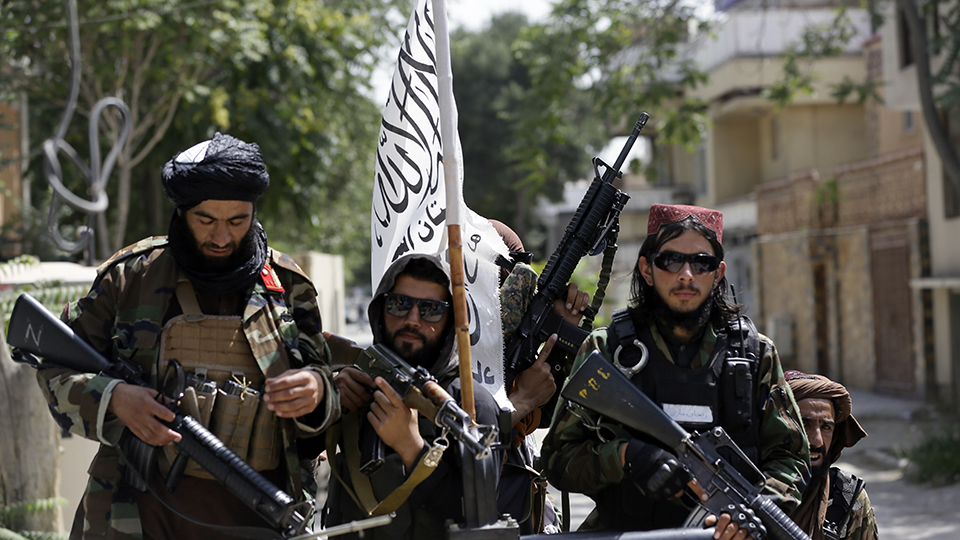
Afghanistan's economy is "shaped by fragility and aid dependence" and its biggest economic challenge is "finding sustainable sources of growth," according to the World Bank.
About 75 percent of the country's annual public spending is financed by international donations, the World Bank reported before the Taliban took over Afghanistan.
"Afghanistan has always attracted resources. But yes, there is a question mark right now because of the political situation — how that's going to affect the generosity of donors," said Mustapha Ben Messaoud, chief of field operations at UNICEF Afghanistan.
Access to funds
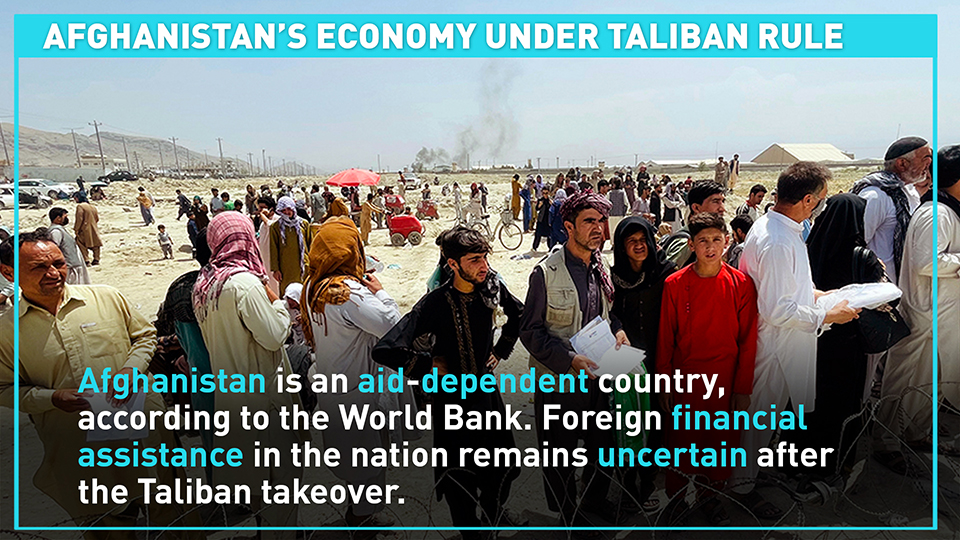
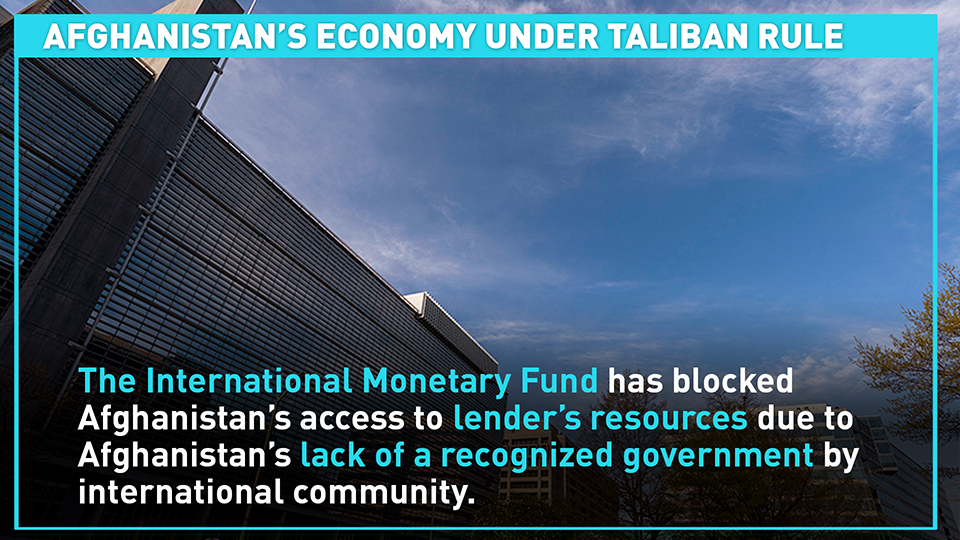
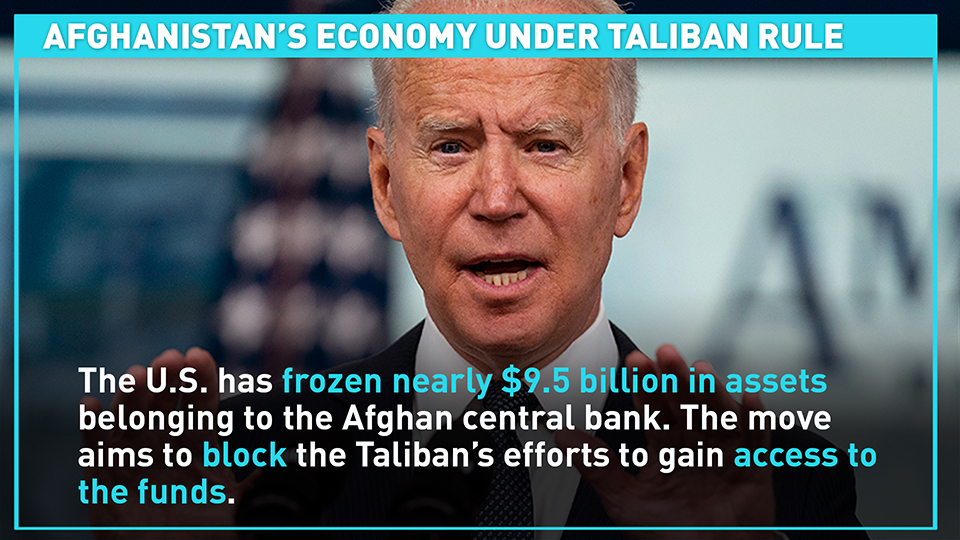
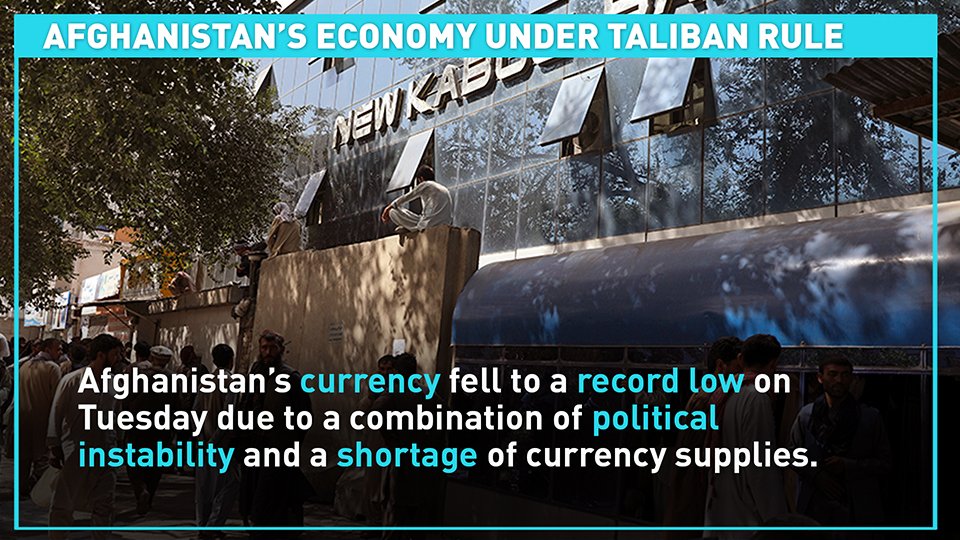
(Click left or right arrow to see more)
With the collapse of the Afghanistan government, foreign financial assistance is uncertain.
Last week, German, one of the country's biggest donors, said it would stop aid if the Taliban took over the country by force.
The International Monetary Fund (IMF) has announced to block Afghanistan's access to lender's resources, including about $440 million in new monetary reserves, due to "lack of clarity within the international community" over recognizing a government in Afghanistan.
Meanwhile, the United States has frozen nearly $9.5 billion in assets stored in the U.S. belonging to the Afghan central bank and stopped dollar shipments to the nation. The move aims to block the Taliban's efforts to gain access to the funds.
Afghanistan's currency fell to a record low on Tuesday with over 86 per dollar due to a combination of political instability and a shortage of currency supplies.
Employment
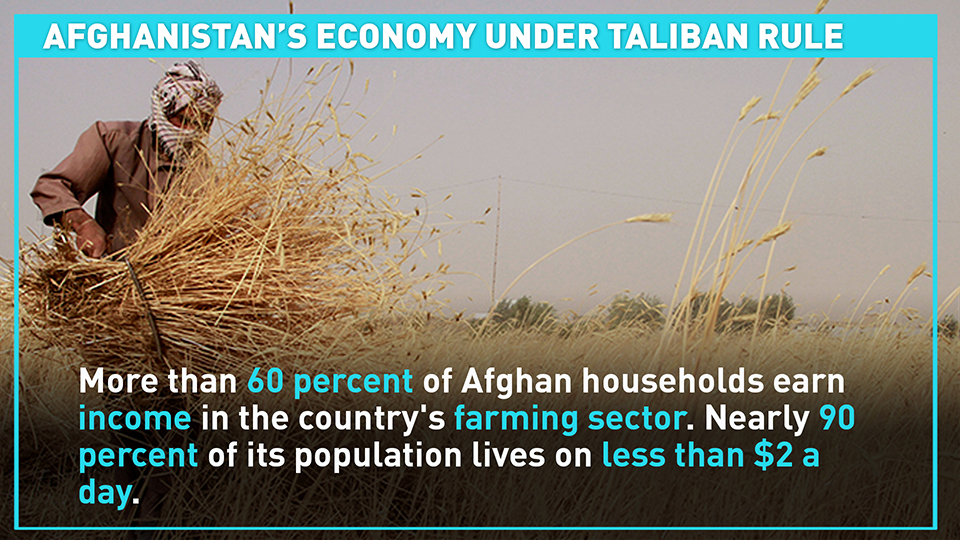
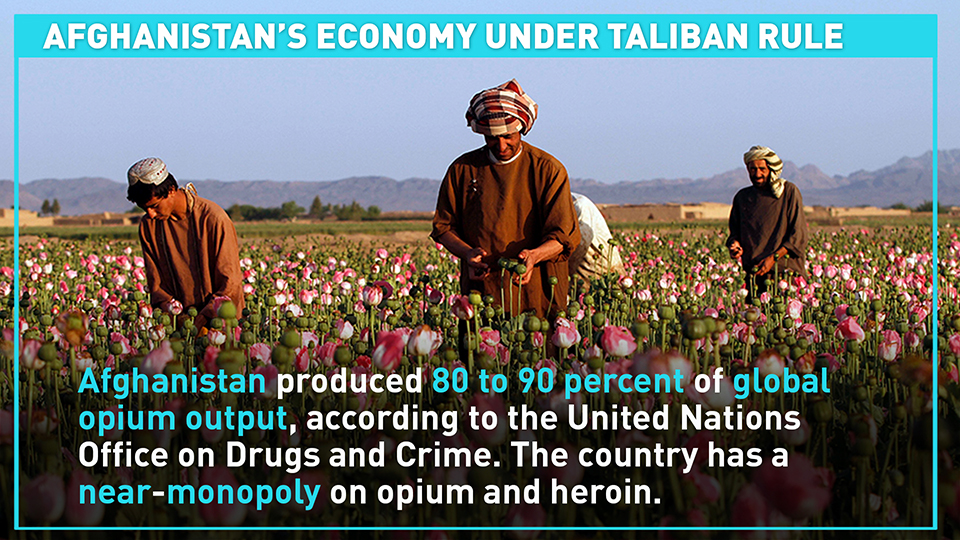
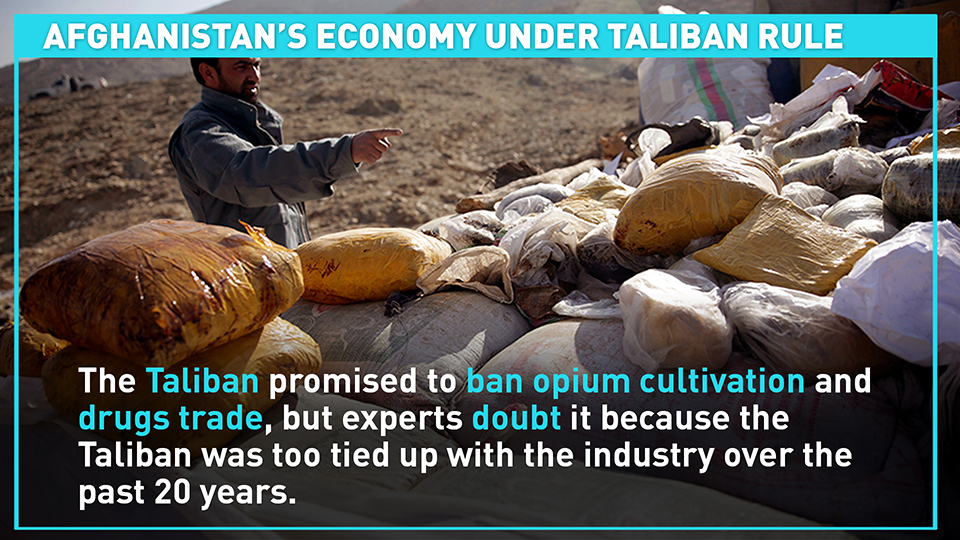
(Click left or right arrow to see more)
Thesecurity concern and severe corruption problems in Afghanistan led to weak foreign business investments.
The private sector in Afghanistan is very narrow, according to the World Bank. Employment is concentrated in low-productivity agriculture, and more than 60 percent of households earn some income from farming.
The illicit economy including opium production, smuggling, and illegal mining also takes a significant share of employment. The opium production has been an important source of revenue for the Taliban.
Afghanistan produced 80 to 90 percent of global opium output, according to the United Nations Office on Drugs and Crime (UNODC). The country has a near-monopoly on opium and heroin.
"We are assuring our countrymen and women and the international community, we will not have any narcotics produced," Taliban spokesman Zabihullah Mujahid said on Tuesday at a first press conference since the Taliban took power.
"From now on, nobody's going to get involved (in the heroin trade), nobody can be involved in drug smuggling," he added.
The Taliban also pleaded for "international assistance" to provide farmers with alternative crops to poppies.
However, international efforts to break Afghanistan's reliance on poppy farming over the past 10 years didn't have much success. Those efforts included paying farmers to grow wheat or saffron, investing in transport links, as well as spraying defoliants on crops and bombing refining facilities, according to France24.
Experts still doubted if Afghanistan could become a "narcotics-free country" under the Taliban.
Mineral Reserves
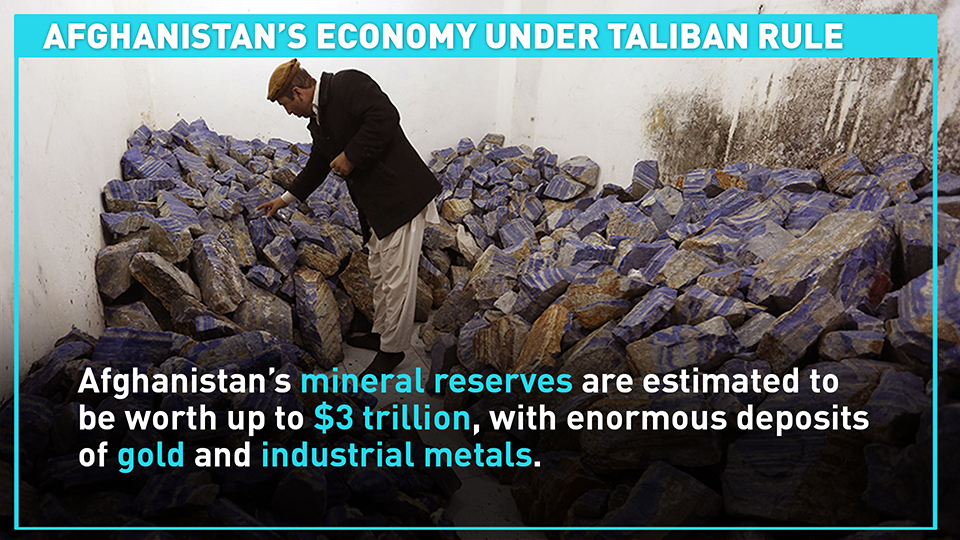

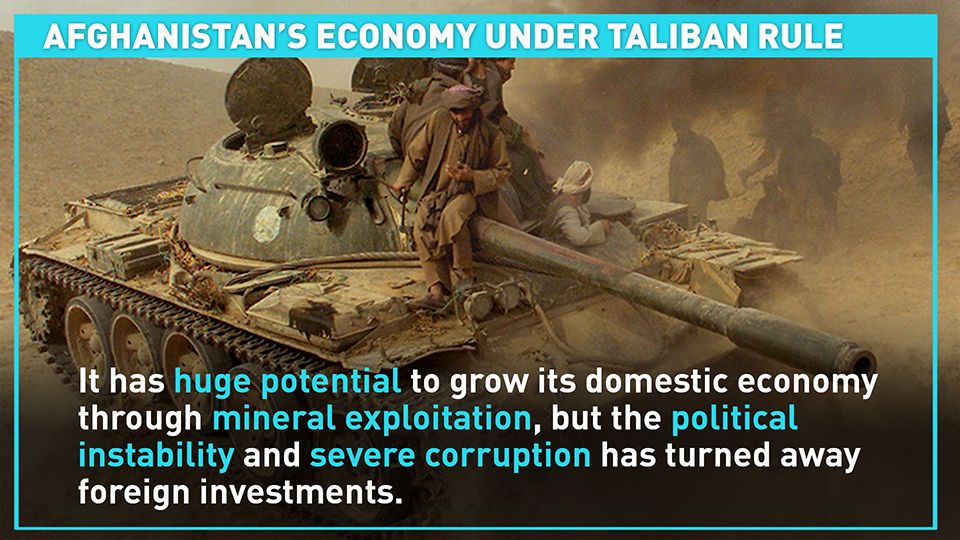

(Click left or right arrow to see more)
As one of the poorest nations in the world, nearly 90 percent of the population in Afghanistan isliving on less than $2 a day. But the country's mineral reserves are estimated to be worth up to $3 trillion, with enormous deposits of gold and industrial metals, according to CNBC.
It has one of the world's biggest deposits of lithium, an essential material for electric batteries and other clean technologies that are vital to cut carbon emissions. But exploiting it requires much greater investment, technical knowledge, and time.
"If Afghanistan has a few years of calm, allowing the development of its mineral resources, it could become one of the richest countries in the area within a decade," Said Mirzad of the U.S. Geological Survey told Science magazine in 2010. He led the Afghanistan Geological Survey until 1979.
Minerals now generate $1 billion in Afghanistan per year and about 30 to 40 percent has been siphoned off by corruption, warlords and the Taliban, according to Mosin Khan, a former Middle East and Central Asia director at the IMF said.
Foreign investment was hard to come, as many global businesses and investors are committed to higher environmental, social and governance standards.
There's a chance for the Taliban to develop the mining sector, but it must prioritize its manpower and efforts on dealing with security and humanitarian issues, according to Rod Schoonover, a scientist and security expert who founded the Ecological Futures Group.
"Functional governance of the nascent mineral sector is likely many years away." said Joseph Parkes, Asia security analyst at risk intelligence firm Verisk Maplecroft.
The world is watching the Afghanistan situation closely. During the Taliban's first press conference, the spokesperson expressed its willingness to build sound relations with other countries. Butthe future of the country depends on the actions and policies of the Taliban.
Check out
The China Report
, our new weekly newsletter.Subscribe here!
 简体中文
简体中文

